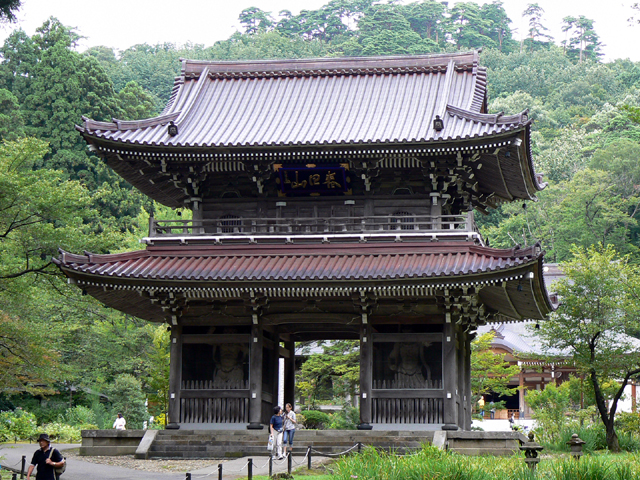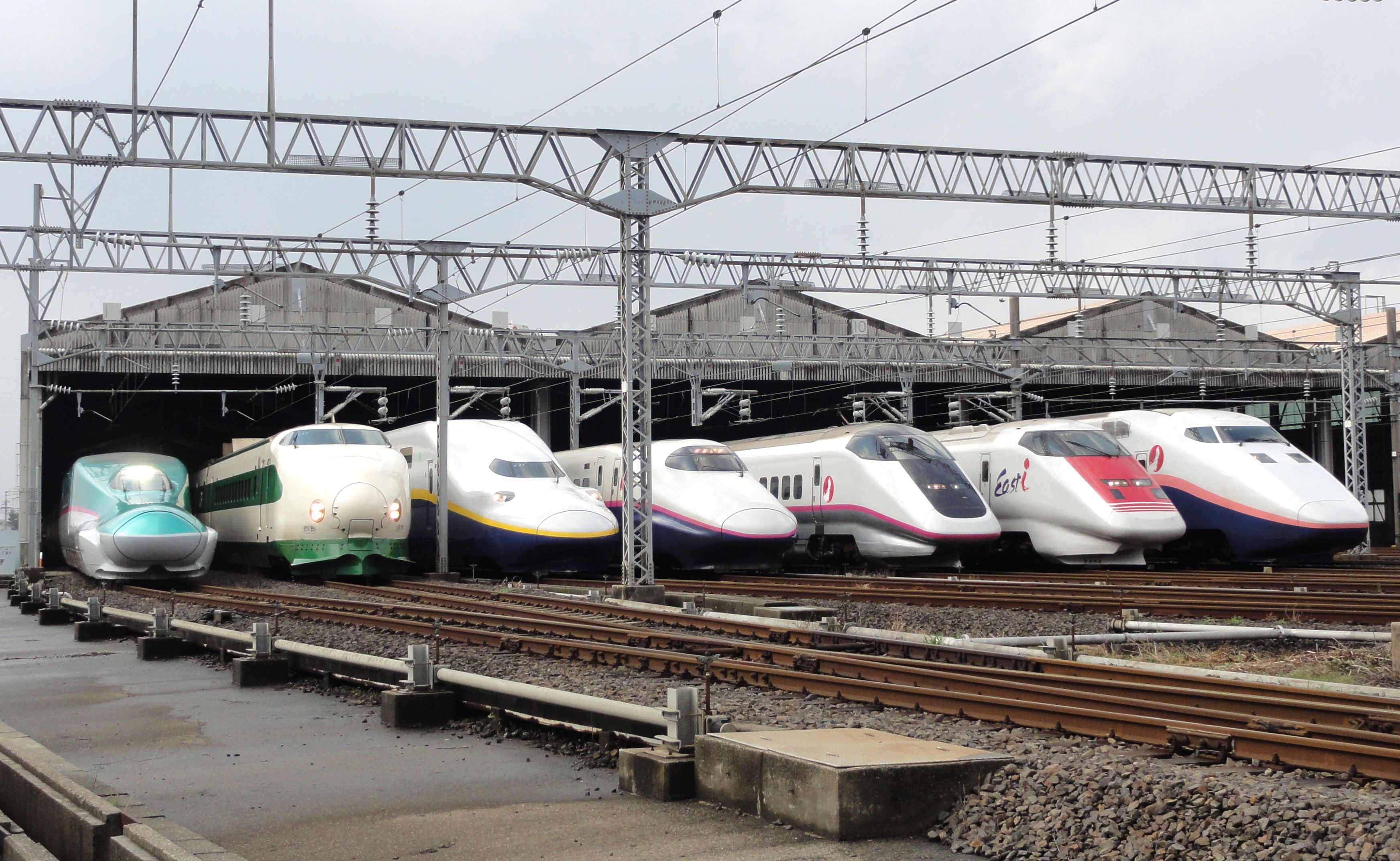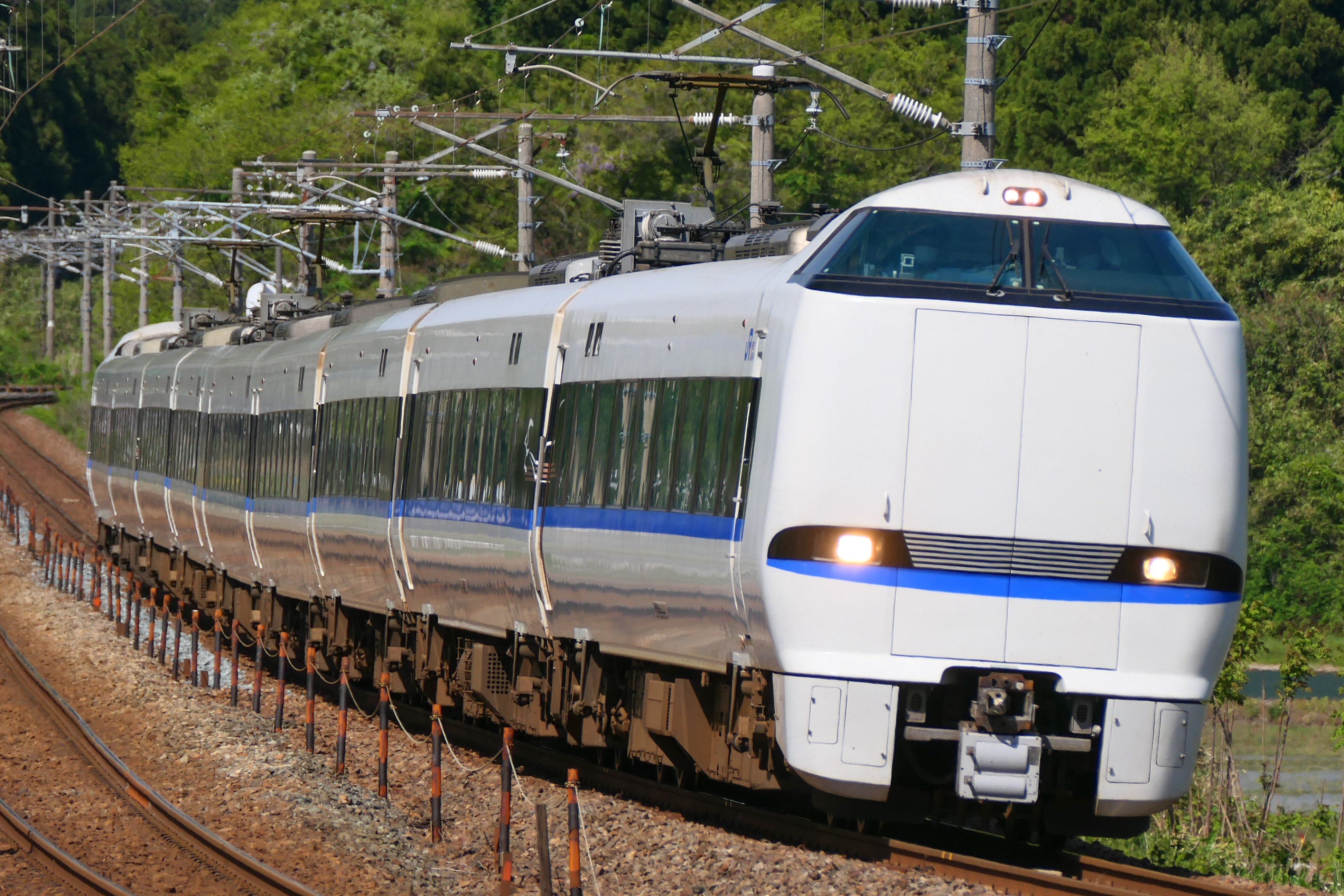|
Hokuhoku Line
The is a Japanese railway line in Niigata Prefecture that runs from Muikamachi in Minamiuonuma City to Saigata in Jōetsu City. It is the sole railway line operated by . Construction of the line first began in 1968 by the Japanese National Railways (JNR), and was initially referred to as the . However, the construction of the line was plagued by numerous delays, and was finally completed as a third sector line on 22 March 1997, including the Akakura Tunnel, the longest on a non-JR line. Unlike most other third sector company lines, the Hokuhoku Line made steady profits after its opening, as the former ''Hakutaka'' Limited Express train service, which travelled using the line, served as the principal link between the Tokyo metropolitan area and the Hokuriku region until the opening of the Hokuriku Shinkansen in 2015. The line's former maximum speed limit of allowed the ''Hakutaka'' to become the fastest narrow gauge train service in the country, matched only by the standar ... [...More Info...] [...Related Items...] OR: [Wikipedia] [Google] [Baidu] |
Niigata Prefecture
is a Prefectures of Japan, prefecture in the Chūbu region of Honshu of Japan. Niigata Prefecture has a population of 2,131,009 (1 July 2023) and is the List of Japanese prefectures by area, fifth-largest prefecture of Japan by geographic area at . Niigata Prefecture borders Toyama Prefecture and Nagano Prefecture to the southwest, Gunma Prefecture to the south, Fukushima Prefecture to the east, and Yamagata Prefecture to the northeast. Niigata, Niigata, Niigata is the capital and largest city of Niigata Prefecture, with other major cities including Nagaoka, Niigata, Nagaoka, Jōetsu, Niigata, Jōetsu, and Sanjō, Niigata, Sanjō. Niigata Prefecture contains the Niigata Major Metropolitan Area centered on Niigata with a population of 1,395,612, the largest metropolitan area on the Sea of Japan coast and the twelfth-largest in Japan. Niigata Prefecture is part of the historic Hokuriku region and features Sado Island, the sixth largest island of Japan in area following the List o ... [...More Info...] [...Related Items...] OR: [Wikipedia] [Google] [Baidu] |
Jōetsu Line
The is a major railway line in Japan, owned by the East Japan Railway Company (JR East). It connects Takasaki Station in Gunma Prefecture with Miyauchi Station (Niigata), Miyauchi Station in Niigata Prefecture, linking the northwestern Kanto region and the Sea of Japan coast of the Chūbu region. The name refers to the old Provinces of Japan, provinces of Kōzuke Province, Kōzuke (上野) and Echigo Province, Echigo (越後), which the line connects. Services Before the opening of the Jōetsu Shinkansen in 1982, the Joetsu Line had frequent service by express trains connecting Tokyo and Niigata, Niigata, Niigata. With the opening of the Jōetsu Shinkansen, however, the line became dominated by local and freight train, freight trains. The branch of the Jōetsu Shinkansen between Echigo-Yuzawa Station and Gala-Yuzawa Station (the Gala-Yuzawa Line) technically belongs to the Joetsu Line. Stations Rolling stock Present Local Takasaki to Minakami * 211 series, 211-3000 series 4- ... [...More Info...] [...Related Items...] OR: [Wikipedia] [Google] [Baidu] |
JR East
The is a major passenger railway company in Japan and the largest of the seven Japan Railways Group companies. The company name is officially abbreviated as JR-EAST or JR East in English, and as in Japanese. The company's headquarters are in Yoyogi, Shibuya, Tokyo, next to Shinjuku Station. It is listed in the Tokyo Stock Exchange (it formerly had secondary listings in the Nagoya Stock Exchange, Nagoya and Osaka Exchange, Osaka stock exchanges), is a constituent of the TOPIX Large70 index, and is one of three Japan Railways Group constituents of the Nikkei 225 index, the others being Central Japan Railway Company, JR Central and West Japan Railway Company, JR West. History JR East was incorporated on 1 April 1987 after being spun off from the government-run Japanese National Railways (JNR). The spin-off was nominally "privatization", as the company was actually a wholly owned subsidiary of the government-owned Japanese National Railway Settlement Corporation, JNR Settlement C ... [...More Info...] [...Related Items...] OR: [Wikipedia] [Google] [Baidu] |
Shinkansen Jre
The , colloquially known in English as the bullet train, is a network of high-speed railway lines in Japan. It was initially built to connect distant Japanese regions with Tokyo, the capital, to aid economic growth and development. Beyond long-distance travel, some sections around the largest metropolitan areas are used as a commuter rail network. It is owned by the Japan Railway Construction, Transport and Technology Agency and operated by five Japan Railways Group companies. Starting with the Tokaido Shinkansen () in 1964, the network has expanded to consist of of lines with maximum speeds of , of Mini-shinkansen lines with a maximum speed of , and of spur lines with Shinkansen services. The network links most major cities on the islands of Honshu and Kyushu, and connects to Hakodate on the northern island of Hokkaido. An extension to Sapporo is under construction and was initially scheduled to open by fiscal year 2030, but in December 2024, it was delayed until the end ... [...More Info...] [...Related Items...] OR: [Wikipedia] [Google] [Baidu] |
Passing Loop
A passing loop (UK usage) or passing siding (North America) (also called a crossing loop, crossing place, refuge loop or, colloquially, a hole) is a place on a single line railway or tramway, often located at or near a station, where trains or trams travelling in opposite directions can pass each other. Trains/trams going in the same direction can also overtake, provided that the signalling arrangement allows it. A passing loop is double-ended and connected to the main track at both ends, though a dead end siding known as a refuge siding, which is much less convenient, can be used. A similar arrangement is used on the gauntlet track of cable railways and funiculars, and in passing places on single-track roads. Ideally, the loop should be longer than all trains needing to cross at that point. Unless the loop is of sufficient length to be dynamic, the first train to arrive must stop or move very slowly, while the second to arrive may pass at speed. If one train is too lo ... [...More Info...] [...Related Items...] OR: [Wikipedia] [Google] [Baidu] |
683 Series
The is a dual-voltage electric multiple unit (EMU) train type operated by West Japan Railway Company (JR-West) on limited express services in Japan since 2001. Variants 683-0 series The first subseries consists of 54 cars composed of 6 6-car trains (W31–W36) and 6 3-car trains (V31–V36) built in 2001–2002. 683-2000 series 87 cars were built in 3-car and 5-car sets. This subseries was subsequently transferred to the 289 series with their AC equipment removed. The move was made after the opening of the Hokuriku Shinkansen and the associated discontinuation of service by these sets on the Hokuhoku Line. 683-4000 series 108 cars were built in 9-car sets for a total of 12 trainsets. File:JR West 683 series EMU 421.JPG, 683-4000 series 683-8000 series This is the designation given to a 6-car train (N03) and a 3-car train (N13) formerly owned by Hokuetsu Express for services on the ''Hakutaka'' limited express. At the opening of the Hokuriku Shinkansen in March 2015, ... [...More Info...] [...Related Items...] OR: [Wikipedia] [Google] [Baidu] |
681 Series
The is a dual-voltage electric multiple unit (EMU) train type operated by West Japan Railway Company (JR-West) on limited express services in Japan. Variants 681-0 series Four six-car sets (T01–T03, T06) and five three-car sets (T11–T13, T15, T17) are used on '' Thunderbird'' services. These trains feature ''Thunderbird'' branding. Also four six-car sets (W01–W04) and four three-car sets (W11–W14) were used on '' Hakutaka'' services. These trains featured "White Wing" logos. From February 2015, ''Hakutaka'' W sets began being repainted into the same livery as 683 series The is a dual-voltage electric multiple unit (EMU) train type operated by West Japan Railway Company (JR-West) on limited express services in Japan since 2001. Variants 683-0 series The first subseries consists of 54 cars composed of 6 6-ca ... trainsets used on '' Shirasagi'' services, with thin blue and orange lines below the window band. 681-1000 series The pre-series six-car set (T18) and ... [...More Info...] [...Related Items...] OR: [Wikipedia] [Google] [Baidu] |
Kubiki Station
is a railway station on the Hokuetsu Express Hokuhoku Line in the city of Jōetsu, Niigata, Japan. Lines Kubiki Station is served by the Hokuetsu Express Hokuhoku Line and is 53.6 kilometers from the starting point of the line at . Station layout The station has two elevated opposed side platform A side platform (also known as a marginal platform or a single-face platform) is a platform positioned to the side of one or more railway tracks or guideways at a railway station, tram stop, or transitway. A station having dual side platforms, ...s connected to a dome-shaped station building underneath. The station is unattended. Platforms File:くびき駅舎2 04-08-27.JPG, Rear view of Kubiki Station File:Kubikieki-1.JPG, The platforms in March 2012 Adjacent stations History The station opened on 22 March 1997 with the opening of the Hokuhoku Line. Passenger statistics In fiscal 2015, the station was used by an average of 85 passengers daily (boarding passengers only ... [...More Info...] [...Related Items...] OR: [Wikipedia] [Google] [Baidu] |
Viaduct
A viaduct is a specific type of bridge that consists of a series of arches, piers or columns supporting a long elevated railway or road. Typically a viaduct connects two points of roughly equal elevation, allowing direct overpass across a wide valley, road, river, or other low-lying terrain features and obstacles. The term ''viaduct'' is derived from the Latin ''via'' meaning "road", and ''ducere'' meaning "to lead". It is a 19th-century derivation from an analogy with ancient Roman aqueducts. Like the Roman aqueducts, many early viaducts comprised a series of arches of roughly equal length. Over land The longest viaduct in antiquity may have been the Pont Serme which crossed wide marshes in southern France. At its longest point, it measured 2,679 meters with a width of 22 meters. Viaducts are commonly used in many cities that are railroad hubs, such as Chicago, Birmingham, London and Manchester. These viaducts cross the large railroad yards that are needed for freigh ... [...More Info...] [...Related Items...] OR: [Wikipedia] [Google] [Baidu] |




